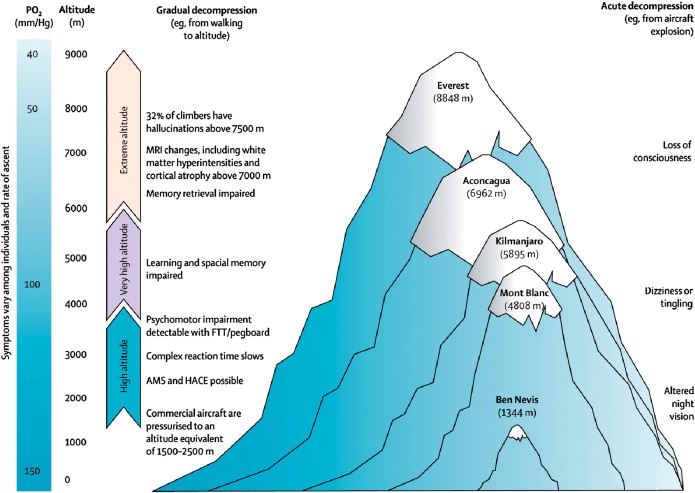
Altitude Sickness Types, Causes, Symptoms, Precaution and Treatment

Acute Mountain Sickness (AMS) can develop at any altitude over 2000 meters (6562 ft) in the Himalaya of Nepal. Altitude sickness trekking is major mountain sickness in the Himalayas.
Before you go for trekking, it is better to know about the Mountain Sickness.
Acute Mountain Sickness (AMS) can develop at any altitude over 2000 meters (6562 ft) in the Himalaya of Nepal. Altitude sickness trekking is major mountain sickness in the Himalayas.
Before you go for trekking, it is better to know about the Mountain Sickness.
AMS: Acute Mountain Sickness (Mild symptoms feel like a hangover)
HAPE: High Altitude Pulmonary Edema (Lung problem associated with water in the lung)
HACE: High Altitude Cerebral Edema (Mental or psychological problems associated with the presence of
Water/fluid in the head)
AMS: Acute Mountain Sickness (Mild symptoms feel like a hangover)
Never ascend with any symptoms of AMS! Usually within one or two days you will feel well and can continue your trek. You can always re-ascend when the person feels better.
HAPE: High Altitude Pulmonary Edema (Lung problem that is associated with water in the lung)
HACE: High Altitude Cerebral Edema (Mental or psychological problem associated with water in the head)
HACE can lead to unconsciousness and death within 12 hours if progressive symptoms are ignored.
If the victim is unable to walk s/he is carried down on the Sirdar/guide/porter’s back or by Yak/horse. No matter what the reason, never delay, even at night, and seek medical help. Treatment is no substitute for decent. No special precautions are needed on decent. The only cure is to descend, and then to climb no higher until the symptoms have disappeared.
Do not hurry to the destination when trekking in the Himalayan of Nepal. The main precaution to take is to not go up high too fast. You should schedule frequent rest days between the 3500m and 4300m contours, sleeping at the same altitude for at least two nights. Climb higher during the day, but always descend to the same level to sleep.
Drink 3-4 liters of fluids (boiled water, iodinated water, soup etc) per day to avoid dehydration; this helps in the acclimatization process.
We do not recommend taking any drug to try and prevent AMS for the usual trekking routes in Nepal. It is safer to rely on a planned slow ascent. Nowadays, however, some trekkers use the drug cetazolamide (Diamox) as one treatment for mountain sickness. Talk to your physician about its use and side effects. In addition, other drugs are Nifedipine which is used for HAPE, and Dexamethasone which is used for HACE. Remember – do not take medicines indiscriminately and to consult your physician.
You should not plan to go to high altitude if you have a known heart disease, difficulty breathing at sea level or are pregnant (recommended to stay below 3600 meters). For other chronic medical conditions consult your physician.
Children are more susceptible to AMS and need to be watched closely. It is risky to trek to high altitude with infants who cannot tell you when they are feeling well.
Do not expect everyone in your party to acclimatize at the same rate. You may have to wait an extra day for some members or be prepared to split the group. Being in a hurry in the mountains of Nepal can be deadly!
© 2011 - 2025 All rights reserved. Life Dream Adventure. Developed By: Xenatech Nepal.